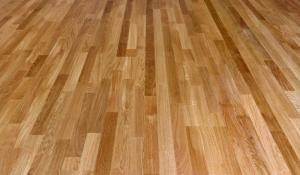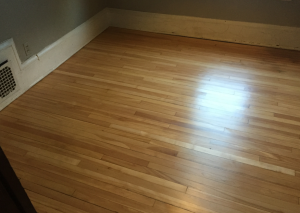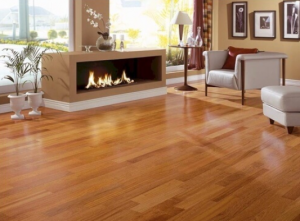Royal Wood Floors Helps Milwaukee Home Owners Understand More About Wood Types Used in Hard Wood Floor Installations
Milwaukee hard wood floor company helps educate home owners on types of wood that can be used in hard wood floor installations.
MILWAUKEE, WI, UNITED STATES, April 18, 2017 /EINPresswire.com/ -- Royal Wood Floors specializes in hard wood floor refinishing and installing hard wood floors in the greater Milwaukee area and has been highly successful for over 15 years. “After servicing or installing a new floor, we make a point of providing the following as a special series of tips for every customer in order to ensure that their floors are protected and provide that stunning hard wood beauty for as long as possible”, says Keith Allman who owns Royal Wood Floors. He continues to say, “there are a variety of problems that can affect the beauty and life of hard wood floors and once these are isolated they can be handled properly so that the hard wood lasts for years the way it should”. “We feel that by educating the home owner they can be better equipped to tackle a project themselves or will know what to ask and expect when working with professionals”, he ends.
Wood is a dynamic medium. Like all organic materials, it has character and quirks and wood responds to its environment. If you are looking at having hard wood floor installed in your home or place of work, it is a good idea to understand more about it. Because of its “personality”, wood should be treated with understanding and a certain amount of care. It’s important to have realistic expectations about how your wood floors will perform after installation.
The Character of Wood -
As a flooring material, wood is superior to vinyl or carpet both practically and aesthetically. A solid wood floor is more than a covering. It also adds strength and stability to the floor system. A 1-inch thickness of wood has the same insulating value as 15-inches of concrete. Wood is durable and long lasting. Occasional sanding and refinishing essentially results in a brand new floor. Wood floors don’t retain mildew or absorb dust, simplifying cleaning. Perhaps the most appealing characteristics of wood flooring, though, are its attractive appearance and natural warmth. A beautiful wood floor can enliven a drab room, enhance any architectural style, compliment furniture and design schemes, and add value to any home or building. A combination of qualities should be considered when selecting a species for flooring; appearance related attributes such as texture, grain and color; as well as mechanical properties such as dimensional stability, durability, and ease in finishing; and finally, availability and cost.
The properties affecting appearance include many different factors, from the nature of the living tree to the way the lumber is sawed, affect the way the finished floor will look. Heartwood and sapwood are possibilities. Heartwood is the older, harder, central part of the tree. It usually contains deposits of various materials that frequently give it a darker color than sapwood. It is denser, less permeable and more durable than the surrounding sapwood. Sapwood is the softer, younger, outer portion of a tree that lies between the cambium (formative layer just under the bark) and the heartwood. It is more permeable, less durable and usually lighter in color than the heartwood. The relative amounts of heartwood and sapwood in a flooring batch may affect the way it accepts stain and finish and, therefore, the finished appearance of the floor. In general, quartersawn and riftsawn flooring will contain less sapwood than plain sawn flooring and will tend to have a straighter grain and more uniform appearance.
The wood grain and texture is also a factor. “Grain” and “Texture” are loosely used to describe similar properties of wood. Grain is often used in reference to annual growth rings, as in “fine” or “coarse” grain: it also is used to indicate the direction of fibers, as in straight, spiral and curly grain. The direction of the grain, as well as the amount of figuring in the wood, can affect the way it is sanded and sawed. Grain also is described as being either “open” or “closed,” referring to the relative size of the pores, which affects the way a wood accepts stain and finishes. Texture usually refers to the finer structure of the wood, rather than to the annual rings. It is sometimes used to combine the concepts of density and degree of contrast between spring wood and summer wood in the annual growth rings. A wood flooring professional should understand this and be able to explain and show you each of these examples.
“The best way to make sure that your hard wood floors are protected and as beautiful as they naturally can be, is to always do the research first or seek professional help. Then problems such as the ones described here can be prevented,” says Allman.
For more information about this experienced and professional hardwood floor restoration and new installation company, or to schedule repairs by these wood floor refinishing contractors, or learn about custom wood styles or the company’s inlay and medallion installation services, phone Keith Allman at 414-378-2066. Easy estimates and appointments are currently available through the company’s website, http://royalwoodfloor.com/. The company provides top craftsmanship and cares for many types of custom and domestic wood. Visit the company’s website for examples of previous work.
Keith Allman
Royal Wood Floors
414-378-2066
email us here
Legal Disclaimer:
EIN Presswire provides this news content "as is" without warranty of any kind. We do not accept any responsibility or liability for the accuracy, content, images, videos, licenses, completeness, legality, or reliability of the information contained in this article. If you have any complaints or copyright issues related to this article, kindly contact the author above.





